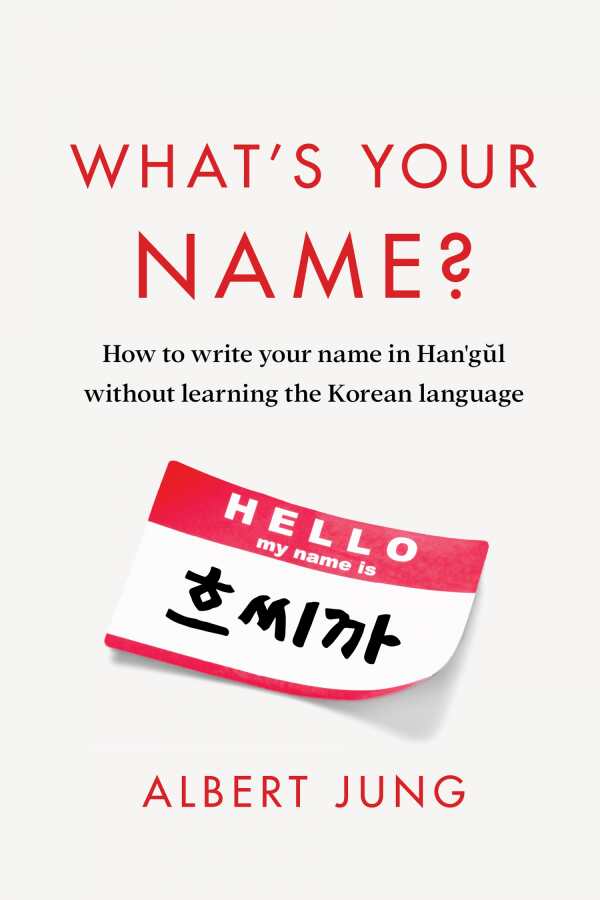What's Your Name?
How to Write Your Name in Hangul Without Learning the Korean Language
Equipping lay learners to master sounds from various languages and thus communicate better across the world, What’s Your Name? is a compelling communication guide.
Albert Jung’s informative communication guide What’s Your Name? puts forth a Korean writing system as a means of simplifying international exchanges.
The book’s language lesson begins with a consideration of the dignity of a name, while also noting that French actress Catherine Deneuve and Egyptian novelist Naguib Mahfouz have names that may be difficult to pronounce by their international fan bases. Hangul is then introduced as a simple tool for equipping learners to master sounds from various languages. A fifteenth-century Korean script created to represent sounds based on how they are formed in the mouth, it is accessible to laypeople and scholars alike; it consists of just twenty-four letters. This guide to learning it is replete with diagrams, charts, and figures to assist.
Although presented from an anglophone perspective, the book includes comparison charts to show how unique sounds from French, German, Spanish, and Russian all find their complements within the Korean writing system. For example, “Although the phonetic symbol [k] is defined as the same sound in both English and Spanish, the c in the English word cut [kΛt] and the c in the Spanish casa [kasa] are pronounced with distinctly different sounds.” Thus, Hangul is held up as a strong alternative to the International Phonetic Alphabet—and more precise in communicating sounds. The information necessary to match sounds from the Roman and Cyrillic alphabets to their corresponding sounds and symbols of Hangul is also included.
Its tone conversational, the book introduces symbols and then compares them to common words in modern Korean, English, French, and Spanish. Instead of employing linguistic terminology, the symbols of Hangul are paired with the anatomy of the mouth. The entire system is explained in terms of the sounds that are formed around five parts of the mouth. By placing emphasis on how and where speech sounds are formed, the book transcends issues of inconsistent pronunciations with modern alphabets.
The text rests on its own authority. There are no academic credentials provided to support its pedagogy. Nonetheless, the central claim that its method will help practitioners write any given name in Hangul, even without previous knowledge of the Korean language, is compelling.
What’s Your Name? is an engaging language arts book that demonstrates how a medieval Korean writing system can be adapted for popular use.
Reviewed by
Paige Soto
Disclosure: This article is not an endorsement, but a review. The publisher of this book provided free copies of the book and paid a small fee to have their book reviewed by a professional reviewer. Foreword Reviews and Clarion Reviews make no guarantee that the publisher will receive a positive review. Foreword Magazine, Inc. is disclosing this in accordance with the Federal Trade Commission’s 16 CFR, Part 255.

